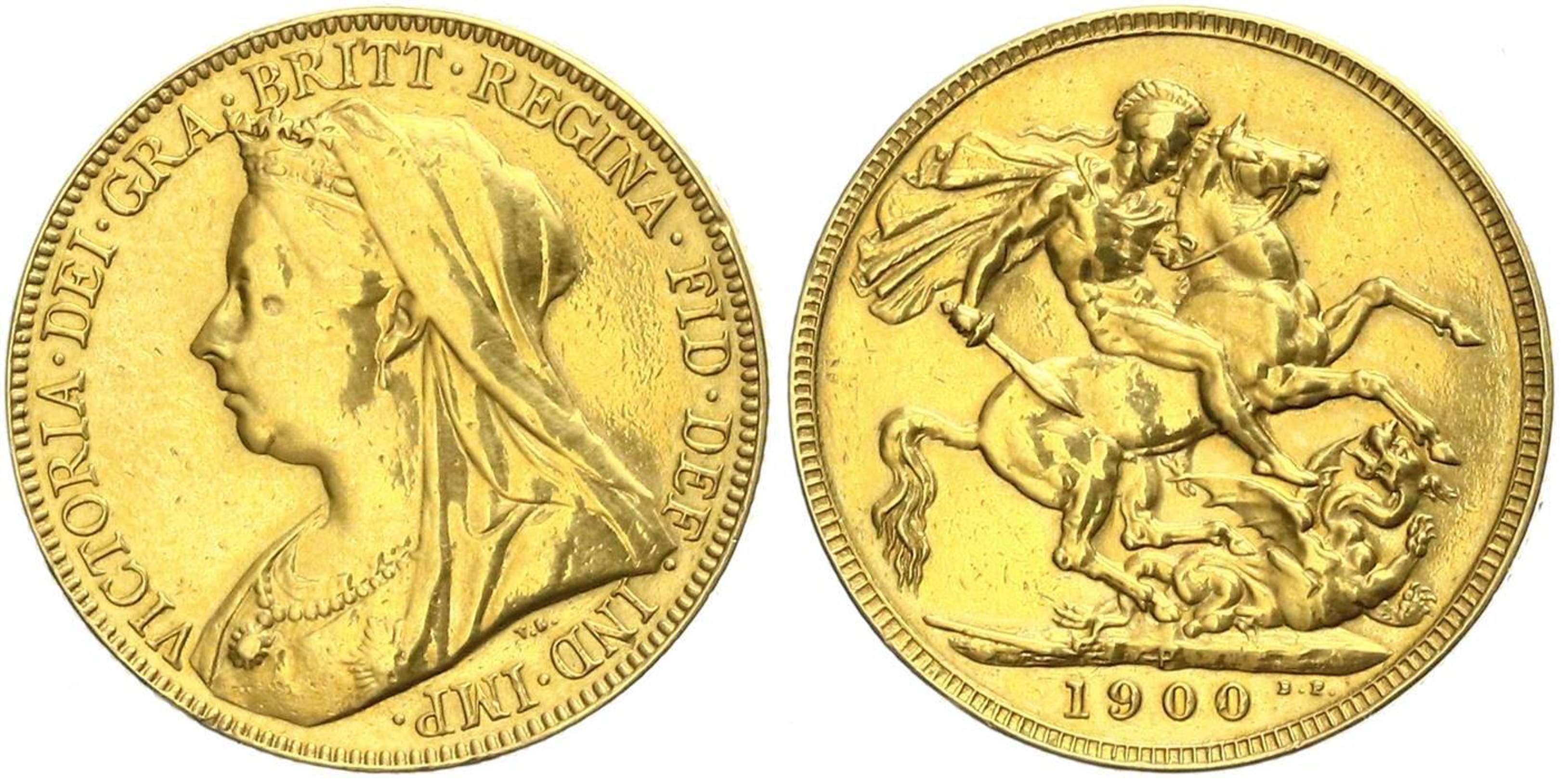
Struck under different monarchs, these ancient sovereigns are iconic not only for their gold content but also for the historical significance they carry. Each sovereign tells a chapter of the United Kingdom's history through the royal effigies that adorn these coins. With a total mass of 7.98 grams, including 7.32 grams of pure gold corresponding to a 22-carat alloy, these coins combine the purity of gold with a small amount of copper, giving them both high material value and increased durability.
Timeline of Sovereign Coins
1. Victoria (Reign: 1837-1901)
During Queen Victoria's reign, the sovereigns underwent several effigy changes, reflecting different phases of her life and reign.
- Young Victoria Shield (Strikes: 1838-1885): From the year following her accession to the throne, the first gold sovereigns bearing Victoria's effigy were struck. These coins depict a young queen with a shield on the reverse. They bear the Latin inscription "VICTORIA DEI GRATIA," which translates to "Victoria by the grace of God.

- St. George (Strikes: 1871-1885): Between 1871 and 1885, a second version of the Young Victoria sovereigns was struck, this time featuring the motif of St. George slaying the dragon on the reverse, replacing the shield. This iconic design, created by Benedetto Pistrucci, became the standard for all subsequent sovereign coins. These coins bear the inscription "VICTORIA D:G: BRITANNIAR:REG:F:D:," meaning "Victoria, by the grace of God, Queen of Great Britain, Defender of the Faith."

- Victoria Jubilee (Strikes: 1887-1892): In 1887, to celebrate Victoria's 50th year on the throne (her Golden Jubilee), a new portrait was created, showing the queen wearing a crown.

- Old Head Victoria (Strikes: 1893-1901): From 1893, a final portrait of Victoria was introduced, depicting the queen at an advanced age, wearing a veil. This effigy was struck until the end of her reign in 1901. These coins still feature St. George slaying the dragon on the reverse, with a modified inscription: "VICTORIA•DEI•GRA•BRITT•REGINA•FID•DEF•IND•IMP•," meaning "Victoria, by the grace of God, Queen of the Britains, Defender of the Faith, Empress of India."

2. Edward VII (Reign: 1901-1910)
After Queen Victoria's death in 1901, her son Edward VII ascended to the throne for a reign that lasted 9 years. The first coins bearing his effigy were struck in 1902. Although his reign was short, it allowed for the production of distinctive sovereigns, marked by the inscription "EDWARDVS VII D:G: BRITT: OMN: REX F:D: IND: IMP:," which translates to "Edward VII, by the grace of God, King of the Britains, Defender of the Faith, Emperor of India."
An anecdote about effigy orientation: A British tradition holds that each new monarch is depicted on coins looking in the opposite direction of their predecessor. Thus, Edward VII is shown looking to the right, unlike his mother, Queen Victoria, who faced left. This alternation has been maintained throughout history, except for a notable exception under Edward VIII, who chose to be depicted facing left. However, his abdication before his coronation prevented this orientation from becoming the norm.
3. George V (Reign: 1910-1936)
King George V, succeeding his father Edward VII in 1910, left a lasting mark on the sovereigns struck from 1911 during his reign. Coins bearing his effigy are adorned with the inscription "GEORGIVS V D.G.BRITT F.D.IND:IMP:," meaning "George V, by the grace of God, King of all the Britains, Defender of the Faith, Emperor of India."

Appeal for Collectors and Investors
Ancient British sovereigns are highly prized by collectors and investors for their unique combination of history, craftsmanship, and material wealth. These coins, particularly those struck under Victoria, Edward VII, and George V, are not only objects of great historical value but also solid investments. Their gold content, combined with their historical significance, continues to captivate the imagination of numismatists worldwide, making these coins an essential addition to any serious collection or investment portfolio.
Conclusion
In summary, ancient British sovereigns are far more than mere coins. They embody history, craftsmanship, and wealth through the ages. Whether you are a passionate collector or a savvy investor, these coins represent a unique opportunity to own a tangible piece of the past while securing a safe and enduring investment for the future.





